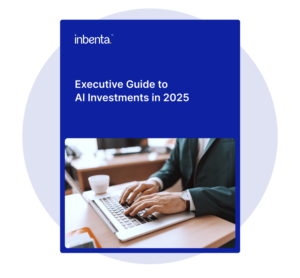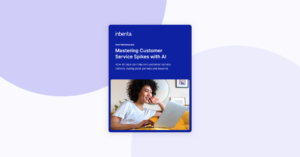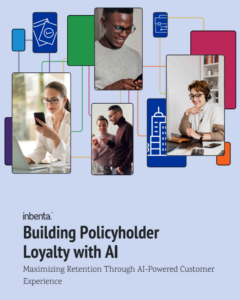There are many reasons companies deploy AI chatbots. For some companies, it is part of a global digital transformation and self-service improvement. For others, it can be a way to create a buzz or – via Facebook Messenger – a limited and restricted test of customers’ response to this exciting communication channel.
Depending on the context in which the chatbot project takes place, and therefore its scope of action, its implementation may take a little or lot of time. From our experience, we know it’s the framing phase that is the most time-consuming since you have to consult with all the teams involved in the project and obtain various approvals to start the developments.
Team coordination is crucial when defining the roles of each team member within the project and potentially redefining or creating new positions. In addition to scoping internal resources, it’s also necessary to define the product by outlining the design, access mode, functionalities as well as content.
What timeframe for an AI chatbot project?
At Inbenta, it takes us about 8 weeks to deploy an AI chatbot, from the framing phase to the launch date. This short timeframe is made possible by:
- An API with a multitude of proven functionalities;
- A proprietary and patented NLP technology developed and perfected over the course of 15 years by our in-house engineers and linguists;
- A well-established development process.
As with any project, the timeframe of an AI chatbot project can end up taking longer for multiple reasons. Here are some examples:
Top seven obstacles to deploying an AI chatbot in a short timeframe
Here’s a list of the seven main obstacles of maintaining your initial schedule:
Unrealistic framing of the initial project
- Ill-defined initial objectives will lead to a scattering in the choice of functionalities to be developed or to ever-changing priorities
- Risks that were poorly or not identified from the outset
- Project instances that change along the way
Solution: Plan to have a plan… before you build your chatbot. Clearly state your objectives, outline all the functionalities that are needed and identify risk.
Insufficient support from your service provider
- Lack of recommendations on poorly constructed decision trees
- Lack of expertise on chatbot best practices regarding ergonomic or editorial
- Lack of experience in terms of developing decision trees and a knowledge base
Solution: Be sure to vet your service provider thoroughly. They need to have immense experience in building decision trees and a knowledge base, and they need to understand AI chatbot best practices.
A slow testing phase
- When all the stakeholders involved in the project don’t work at the same speed; for example, a client tests the product in two days, but it takes two weeks for the developer to correct the bugs uncovered during this beta testing phase.
- If the project lacks internal resources
Solution: Create a testing plan BEFORE getting started with your AI chatbot project. Include this in the testing plan: appropriate testing techniques, have internal resources available, plan to have the right staff available to test it at the right time, and give testers a checklist of what they need to test like understanding intent, conversation flow, and error handling.
A beta testing phase that goes on forever
It often happens that the developed solution is in conformity with the original specifications, but the client decides to keep on improving the bot without releasing it live. This is not something that we recommend doing as you’re missing out on feedback coming from real users. Indeed, putting your chatbot into production allows you to test your customers’ interest in this new communication channel as well as gather real questions. You have to choose between offering something simple and effective quickly or something excellent and unique without a defined delivery date.
Solution: It is very important that user testing is done before releasing your chatbot to your entire market. Beta testers will help you test your chatbot on a wider scale than your internal team can — with different users and people with different personalities.
A knowledge base not ready on time
The knowledge base is the fundamental part of a chatbot and it can take some time to build when starting from scratch. It would be a shame to have a tool that is technically ready, but empty of content. You also have to be careful not to have a knowledge base that is too exhaustive, so it can be beneficial to have some guidance from professional linguists. They help you to enrich your knowledge base, based on the requests made by your users. This is something that only a few providers, such as Inbenta, offer.
Solution: This one is pretty simple. Go with a service provider that understands the importance of a knowledge base and already has the basis covered. Don’t start from scratch here. Learn more about how Inbenta can help you.
A decision tree builder that is too complex
It must be useful, efficient and clearly understandable so that your customers can quickly and easily get familiar with it and start using it without having to request support from you.
Solution: For complex business processes, a chatbot decision tree can be extremely complex. There could be around 25,000 potential nodes in any given decision tree. A good service provider that has been in the AI chatbot business for years should know about developing decision trees.
Poor technical documentation
If you decide to integrate a chatbot solution through an API or a SDK, your technical team needs to be able to do so in complete autonomy with precise and complete integration documentation. This does not prevent your provider’s support team from being on back-up if necessary.
Solution: In-depth technical documentation will save time and money. Plan for this beforehand.
The best way to avoid these traps is to work with a well-established service provider that has plenty of experience in developing intelligent chatbots. This will ensure that your AI chatbot project timeframe meets your initial schedule. With 15 years of experience and over 250 customers globally, Inbenta can help you supercharge your user experiences.











